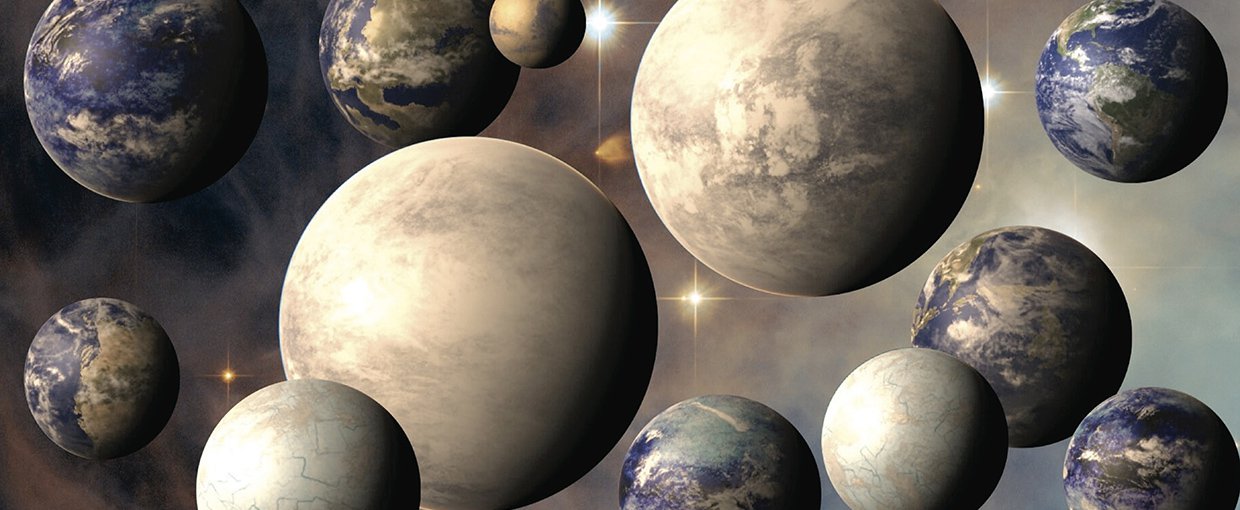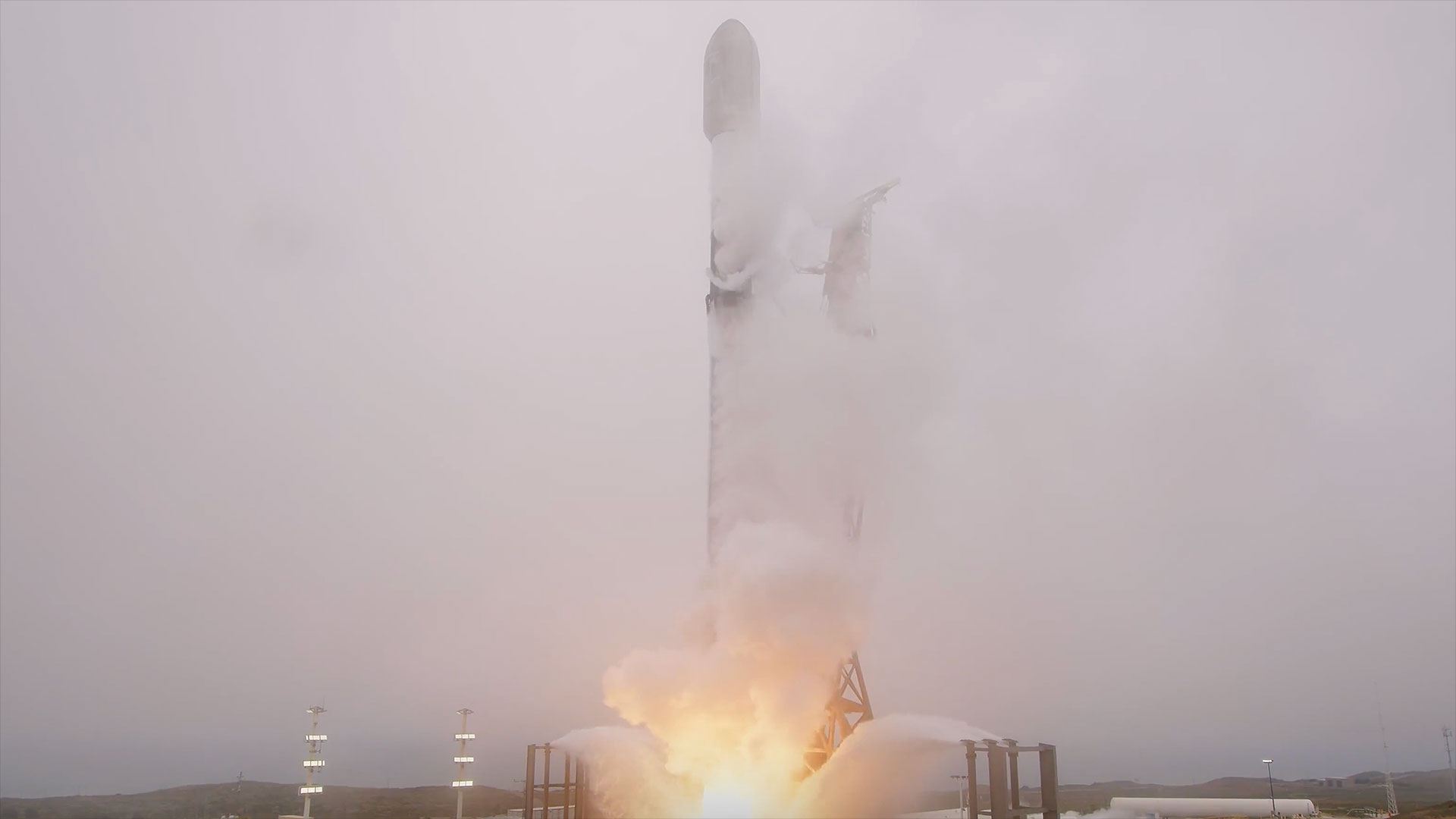Another Day, Another Exoplanet, and Scientists Just Can't Keep Up

As finding alien worlds has gotten easier, learning every single detail scientists can has become, perhaps surprisingly, a bit of a waste of precious time of instruments and computers alike.
To date, scientists have discovered 4,104 confirmed exoplanets. But for every confirmed planet that astronomers nail down, there are handfuls of maybe-planets in the data, whispers in the data that might come from stars hiccuping or pairs of stars dancing or would-be stars that didn't quite make the cut. And scientists no longer have the resources to analyze every potential planet's identity crisis.
"It's gotten to the point that we have so many to choose from now — there's so many exciting candidates coming in that we actually don't have to look at every single one and confirm every single one," Jessie Christiansen, an astronomer at Caltech and NASA's Exoplanet Science Institute, told Space.com. "You really have to prioritize, you have to look at this list of planets that are coming out and say, 'OK, which one do we really think we're going to learn the most about?'"
Related: The Most Fascinating Exoplanets of 2018
Properly confirming an exoplanet is a laborious process that requires scientists to determine both the size and the mass of the object to rule out other phenomena masquerading as a planet. Those observations use instruments that are in high demand from scientists studying a host of phenomena.
And the confirmation process can be time-consuming. In particularly knotty situations, Christiansen said, it can stretch up to a year. "Some of these planet candidates really, if it gets its hooks in you, if it becomes your thing that you're trying to solve," she said, "you can sink all the time into these things."
But there are two different ways to learn about exoplanets. One approach zooms in on individual planets to learn as much as possible — whether it is rocky or gaseous, whether it has an atmosphere and what that atmosphere looks like, how it may have become the way it is. But these questions can only be answered about planets that orbit particularly bright stars; otherwise, scientists can't get enough data.
Breaking space news, the latest updates on rocket launches, skywatching events and more!
The second approach looks at the diversity of planets across the universe as a population. "The Kepler mission was interested in statistics," Christiansen said. "The point was to get thousands of planets to put in our buckets and say, 'OK, this one is the most common, this one is the next most common and that kind of thing.'"
Which is precisely what the Kepler Space Telescope did between 2009 and 2018 during its two distinct missions, called Kepler and K2, finding more than 2,500 confirmed exoplanets. That bounty of riches prompted a shift in scientists' mindsets, Christiansen said, as individual worlds became less unique.
"If it's the 80th hot Jupiter that's been found and we don't have any reason to believe it's going to be different from the 79 that came before it," she said, "are we really going to scrutinize it in the same way that we scrutinized the first 79?"
And so, as the Kepler discoveries piled up, scientists introduced a new technique of evaluating potential planets, called validation. With more easily acquired observations, astronomers run a statistical model evaluating the probability of non-planet explanations for the data they have acquired; below a certain cutoff, that's good enough for scientists focused on surveying populations of exoplanets.
"There was this revolution in the field in our thinking, which was, we don't actually have to confirm every single one, we can validate them," Christiansen said. "So you believe it's a planet, statistically, but you actually haven't measured the mass. That's kind of the cheap — I'm using air quotes — that's kind of a cheap way of confirming planets."
But even validating planets is now too expensive a process for exoplanet scientists to apply to every potential world. And the scarcity of planet-confirmation resources astronomers face is only going to become a starker problem, Christiansen said.
In April 2018, NASA launched its new planet-finder, the Transiting Exoplanet Survey Satellite, or TESS. Scientists expect to confirm about 16,000 planets spotted in its data — but that requires sniffing out somewhere in the vicinity of 100,000 to 300,000 candidate planets and evaluating each.
"Now I have to look at all these candidates and decide which ones I even want to confirm," Christiansen said, who said she's excited by the bounty of exoplanets, despite the strict prioritization it requires. "I've been hunting for planets since 2004 — 15 years — and plenty of scientists have been hunting for even longer. And this is the first time I've really just sat back and gone, 'Wow. It's not worth doing some of this, just in terms of the time.'"
And the embarrassment of riches will only continue, she said. NASA's next exoplanet-finder, the Wide Field Infrared Survey Telescope (WFIRST), may allow scientists to discover 100,000 confirmed exoplanets — which means even more hundreds of thousands of candidates to evaluate.
"Coming up with new statistical ways to deal with this I think will be even more important as a tool going forward," Christiansen said. "We have more planets than we have resources, but that's only going to get worse and much worse, like, exponentially for the next decade."
- 7 Ways to Discover Alien Planets
- Photographing an Exoplanet: How Hard Can it Be?
- The Strangest Alien Planets in Pictures
Email Meghan Bartels at mbartels@space.com or follow her @meghanbartels. Follow us on Twitter @Spacedotcom and on Facebook.

Join our Space Forums to keep talking space on the latest missions, night sky and more! And if you have a news tip, correction or comment, let us know at: community@space.com.

Meghan is a senior writer at Space.com and has more than five years' experience as a science journalist based in New York City. She joined Space.com in July 2018, with previous writing published in outlets including Newsweek and Audubon. Meghan earned an MA in science journalism from New York University and a BA in classics from Georgetown University, and in her free time she enjoys reading and visiting museums. Follow her on Twitter at @meghanbartels.
-
rod ReplyAdmin said:As finding alien worlds has gotten easier, learning every single detail scientists can has become, perhaps surprisingly, a bit of a waste of the precious time of instruments and computers alike.
Another Day, Another Exoplanet, and Scientists Just Can't Keep Up : Read more
"To date, scientists have discovered 4,104 confirmed exoplanets." My comment - The system of record or canonical database used to cite this figure should be identified in the report. This site lists 4150 exoplanets as confirmed now, The Extrasolar Planets Encyclopaedia Some exoplanets considered habitable are now known to have real problems with this concept too, Researchers discover exoplanets can be made less habitable by stars' flares, some other reports Even 'Goldilocks' exoplanets need a well-behaved star,
The exoplanet database I site showing 4150 exoplanets confirmed, these range in distance 4 light-years from earth to 35882 light-years away from earth. So far, none are confirmed as having life (any form) living on those exoplanets. -
Jason Roberts It's wonderful that we have to prioritise observation of exoplanets... Who would have thought it back in the 90s when the first planets outside of our solar system were discovered....Reply
I think we are on the brink of finding life on exoplanets, certainly if it exists we will know if or if not very soon. -
arturner29 Reply
We cannot yet confirm or deny any life on any exoplanet. We don't have the technology to do it. Why jump to conclusions before we know anything?rod said:"To date, scientists have discovered 4,104 confirmed exoplanets." My comment - The system of record or canonical database used to cite this figure should be identified in the report. This site lists 4150 exoplanets as confirmed now, The Extrasolar Planets Encyclopaedia Some exoplanets considered habitable are now known to have real problems with this concept too, Researchers discover exoplanets can be made less habitable by stars' flares, some other reports Even 'Goldilocks' exoplanets need a well-behaved star,
The exoplanet database I site showing 4150 exoplanets confirmed, these range in distance 4 light-years from earth to 35882 light-years away from earth. So far, none are confirmed as having life (any form) living on those exoplanets. -
arturner29 Reply
We will never know it does not exist, unless we look at every single planet in the universe and find nothing. All we can do, once we have to tools (we don't have them yet, and it won't be soon), is start looking at planets we know about, and eliminate them, life or not, one by one. If we never find any life on 1000, or 1000000, or 1 billion planets, that still doesn't prove it doesn't exist somewhere else. All it proves is it doesn't exist on the ones we looked at. We do know it exists on 1 planet in the universe for sure, ours, at least for now. But since we are in the process of turning this one planet into another Venus, if this happens to be the only planet where life took hold in the entire universe, what a tragedy that would be for us to so greedily and callously wipe it and us out.Jason Roberts said:It's wonderful that we have to prioritise observation of exoplanets... Who would have thought it back in the 90s when the first planets outside of our solar system were discovered....
I think we are on the brink of finding life on exoplanets, certainly if it exists we will know if or if not very soon. -
rod Replyarturner29 said:We cannot yet confirm or deny any life on any exoplanet. We don't have the technology to do it. Why jump to conclusions before we know anything?
I am not jumping to conclusions. I am using the scientific method, the same method that *confirmed* the existence of 4150 exoplanets (measurable, verifiable and testable). By using the 4150 exoplanets as an example, the scientific method has not *confirmed* life on these exoplanets or anywhere else in the universe other than on Earth - at this time. That is an observation. -
rod A quick follow up to what I just said about not jumping to conclusions. The 4150 exoplanets I cited from the source, most are detected by the primary transit method, 2972, radial velocity method, 870 detected, imaging, 135 detected, etc. These methods of exoplanet detection are observable, verifiable, repeatable, and testable.Reply -
arturner29 Reply
Ok got it, you were just stating a fact, not reaching a conclusion. If you had said "The scientific method has not confirmed 'or denied' the existence of life on any of these planets", I wouldn't have responded. I've seen and read too many comments leaning towards earth as having the only life in the universe, which I don't agree is a viable conclusion at this time, so I was reading my own bias, and assuming a you were making a conclusion (no life), in your statement. My apologies.rod said:A quick follow up to what I just said about not jumping to conclusions. The 4150 exoplanets I cited from the source, most are detected by the primary transit method, 2972, radial velocity method, 870 detected, imaging, 135 detected, etc. These methods of exoplanet detection are observable, verifiable, repeatable, and testable.
